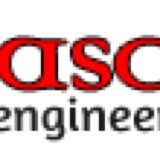Information
-
Document No.
-
Job Title
-
Client / Site
-
Conducted on
-
Prepared by
-
Location
-
Personnel
-
Account Name
-
Postal Address
-
Name of Client
-
Site Address
-
Or GPS locate the site address
-
Customer Description
-
Contact
-
Description of Job
-
Date Received
-
Date Started
-
Date Completed
-
Order Number
-
Quote/Estimate
-
Tax Invoice Number
-
Home
-
Work
-
Mobile
-
Mobile 2
-
Fax
-
Email
Customer Declaration
-
I authorise this contractor to carry out the work as detailed on this form. I understand that no significant additional work will be undertaken without my authorisation and I accept the terms and conditions. I will settle payment by:
-
Card Number
-
Expiry Date
-
Customers Signature
Gas Appliance Markings
-
Make
-
Model
-
Serial Number
-
Isolating Valve
-
Clearances
-
Flue Type
-
Flue Position
-
Appliance Pressure
-
Appliance Pressure High
-
Appliance Pressure Low
-
Input Rating
-
Commissioned
-
Ventilation
-
Combustion
-
Seismic Restraint
-
Date of Install
-
Gas Certification Number
-
Category
-
Type
-
Gas Supplier
-
Labelled
-
Test Pressure
-
Test Time
-
Nil Leak Tolerance
-
Regulators
-
Auto
-
Manual
-
LP-HP
-
First Stage
-
Second Stage
-
Appliance Reg
Service Procedure
-
Isolate gas supply and/or electrical supply to gas appliance/process burner system
-
Remove any panels from the gas appliance/process burner system to gain access to gas controls, gas valves, fan housing, process burner lance and burner diffuser head.
-
Check and clean gas filter, air inlet filters, all openings for foreign particles, dust, spider webs, Clean combustion fan housing and fun blades.
-
Remove to process burner lance from blast tube or quarrel and clean all burner ports on diffuser head. Check process burner diffuser head for scouring, pitting or heat damage and corrosion. Check blast tube or quarrel for deterioration.
-
Remove pilot burner & clean both pilot injector and main burner injector
-
Reassemble process burner and lance with diffuser head, mount back into blast tube, quarrel or furnace.
-
Check both ignition high tension lead and flame monitoring lead for cracks in the insulation and sound connections.
-
Check the ignitor probe for positioning and quick ignition.
-
Check flame rectification probe for correct positioning and appropriate milliamp signal to burner controller system.
-
Check UV cell is clean and sending good output signal to burner controller system/check cored polarity.
-
Test all electrical interlocks are working correctly and connections are free of oxidisation. Check lp/hp gas, air pressure proving systems and switches are operation correctly and lock out process burner system safely. Monitor per-purge cycles before process burner start up.
-
Visually check flame picture and flame stability and that there is no flame impigment on blast tube, quarrel or inside furnace.
-
Set dynamic gas pressure for high and low fire.
-
Check modular damper motor linkages and correct cam settings for high and low firing rates.
-
Check process controller settings and 230V up/down or 4-20 MA output signals, against modular damper motor span and pot settings.
-
Monster process controller PLD values against actual burner performance for achieving process set point accurately.
-
Leak test gas pipe work and controls for soundness - Spy glass detector or pressure test.
-
Check second stage gas regulator OPSO/UPSO pressure lockouts, monitor gas ratio regulator impulse lines from burner head to gas ratio regulator control valves for correct operation. Access gas valve train for heat or physical damage, general wear and tear.
-
Ensure all products of combustion are exhausting through flue system and cowl to atmosphere without restrictions and ensure no flue leakage or spillage.
-
Check for correct operation of gas appliance/process burner system and analyse products of combustion and trim burner for efficiently, print out combustion readings and complete combustion analysis form.
-
Check the gas appliance/process burner system position in relation to combustible materials and environmental conditions.
-
Ensure the Room size or enclosure has adequate ventilation requirement in order to achieve clean safe combustion within gas appliance/process burner system.
-
Ensure the room or enclosure is not used to store flammable goods or chemicals as fumes can contaminate the combustible air and create toxic ore deadly reactions.
-
Locate the data plate and ensure that the gas appliance/process gas burner system is suitable for its intended and process and is correct for the stipulated gas type being burnt in this application.
-
Recommission the gas appliance/process gas burner system in accordance with the relevant manufacturers instruction and NZS 5261 or AS 501 standards.
-
Technicians signature
Materials
-
Quantity
-
Description
-
Unit
-
Amount
-
Materials
-
Labour
-
Travel
-
Sub Total
-
GST
-
INVOICE TOTAL
-
Comments
Labour & Travel
-
Date
-
Select date
-
Select date
-
Select date
-
Select date
-
Select date
-
Select date
-
Select date
-
Time
-
Select date
-
Select date
-
Select date
-
Select date
-
Select date
-
Select date
-
Select date
-
Initials
-
Add signature
-
Add signature
-
Add signature
-
Add signature
-
Add signature
-
Add signature
-
Add signature
-
Add signature
-
Travel
-
Description
Ventilation Requirements
-
For further information see ASNZS 5601:2010, Ventilation requirements, parts 1 & 2
In brief:
- 1.6.4 Ventilation shall ensure proper operation of the gas appliance and flueing system and maintain safe ambient conditions
- 2.2.6 Where a gas appliance is installed in a room, that room shall be ventilated
- Where the total input of open flued appliance exceeds 3MJ/hr for each cubic metre of room volume, the area shall be ventilated
- Where the total input of open flued appliance does not exceed 3MJ/hr per cubic metre of room volume, the required air may be provided by adventitious openings, ie gaps around doors and windows
- to establish whether the required air is to be provided by adventitious openings or additional openings. Calculate the total input of the gas appliance or appliance in the room in MJ/hr and divide by the room volume in cubic metres -
Total gas input MJ/HR
-
Divided by
-
Room Volume m3 L x W x H
-
X
-
X
-
= m3
-
= MJ per cubic metre
-
2.6.6.1 Natural ventilation. Two permanent openings shall be provided each with a minimum free area as calculated using:
A = FxT formula
A = Minimum free area mm square
F = Factor given in table 13
T = Total gas consumption of all gas appliances -
Adventitious Ventilation
-
Additional Ventilation Required
-
Checked
-
Initials
-
Drawing
-
Troubleshooting and fault finding. Please select one of the following.
-
You have remedied the ...
-
What is the root cause of this failure or breakdown?
-
Completion of Work and Job Card
-
Signature of Technician
-
Date
Commissioning and Final Testing Checks (normal operating conditions)
-
Troubleshooting and Fault Finding
-
Have you remedied the ...
-
What is the Root Cause of this failure or breakdown?
Completion of Work & Job Card
-
Signature of Technician
-
Date Signed








